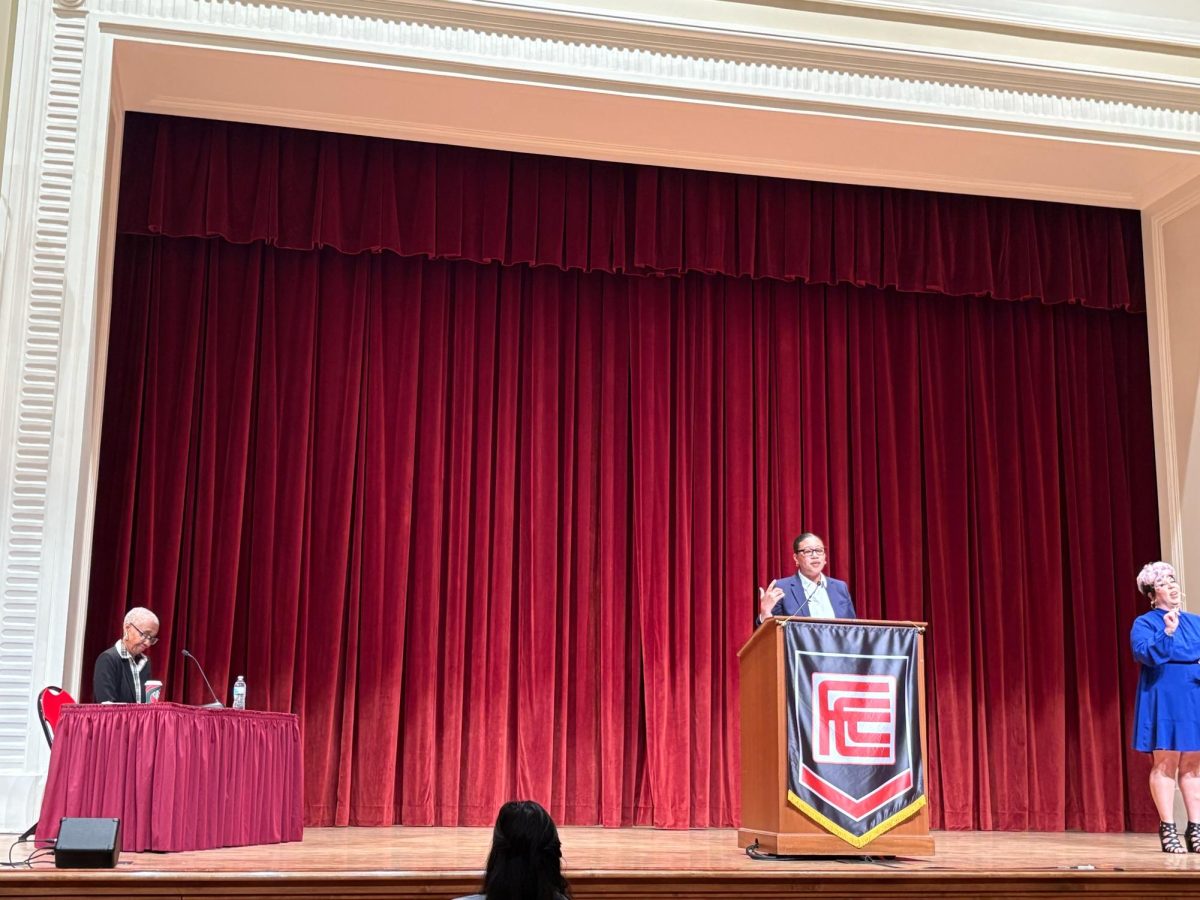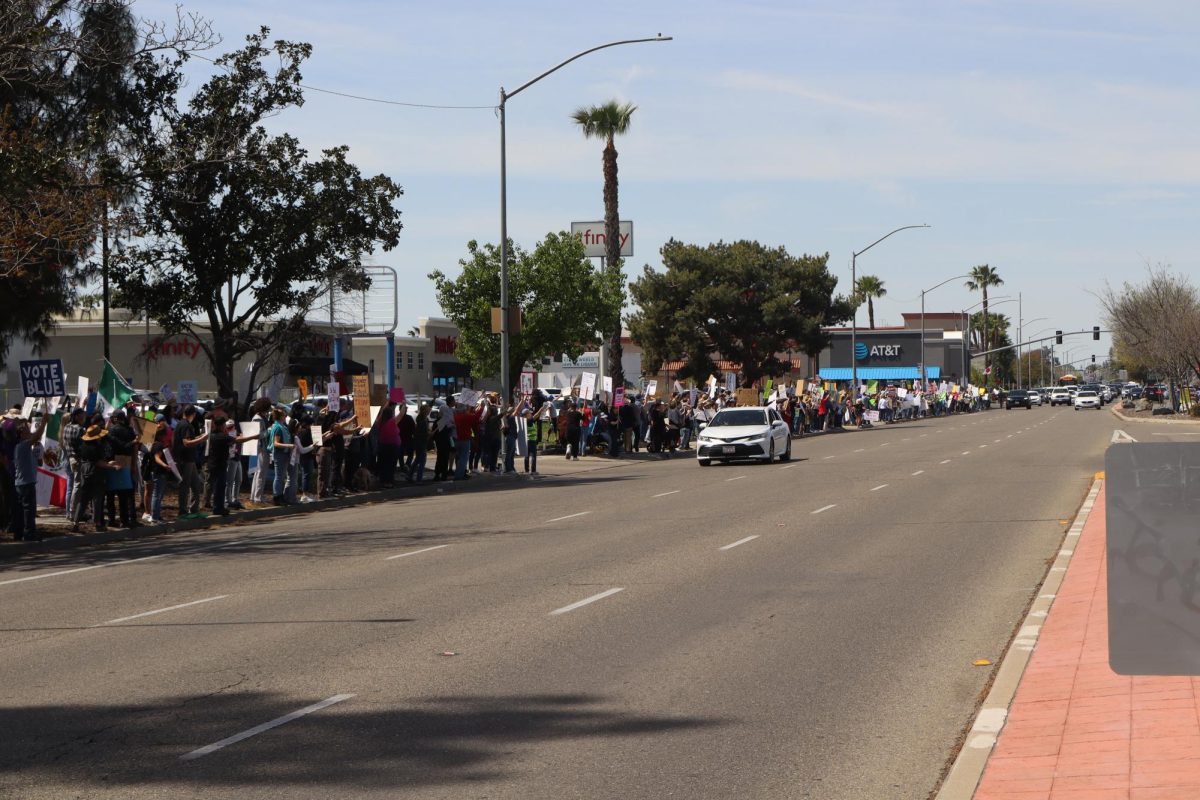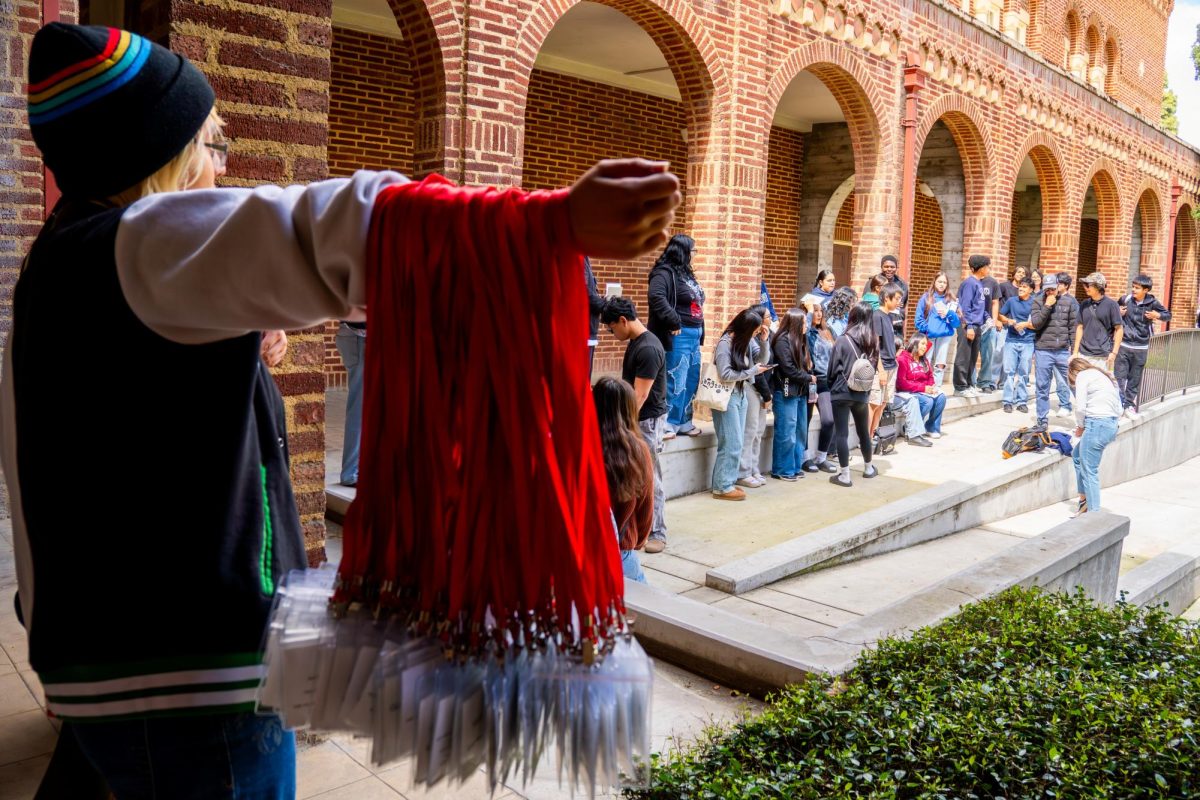In the spring of 2011, Disabled Students Programs and Services (DSP&S) will be relocated to the current administration building. While many applaud this move, it is raising concerns among students and staff affiliated with the program.
The concerns center around the amount of space allocated to DSP&S and whether the space is adequate accommodations for a program that serves more than 2,300 students, some with severe physical disabilities and limitations.
Presently, the DSP&S offices are located on the second floor of the Student Services building which creates access problems for students with physical disabilities. They must go down a ramp and then up an elevator to the office that provides support. Diane Diaz, a DSP&S student who is in a wheelchair, uses the ramp to access DSP&S services upstairs. The hardest part, Diaz explained, is getting back up the ramp. A 2009 a survey of DSP&S students regarding the location of the program’s offices found that 79.8 percent were dissatisfied.
“There was always a concern with DSP&S being located upstairs,” said Homer Greene, educational advisor for College Relations. “Looking at the current administration building as a place for DSP&S to move was something that we had understood for quite a while would solve the problem of students in that program.”
Many see this relocation mostly as a gain. Linda Kane, DSP&S Learning Disabilities Specialist, said she is elated about the relocation. “We can serve the students and instructors in a setting that all of their needs can be met in one place on a ground level,” she said. Kane has expressed her thanks to the committees involved and to President Cynthia Azari. The main fight for relocation was about easier accessibility for students. Moving to the single floor building solves that problem.
But concerns still remain. At the heart of the present dilemma is whether Fresno City College’s administration took campus committee recommendations seriously, particularly, whether President Azari’s decision to allocate a portion of the current administration building space to the Welcome Center, creates more difficulty for the program.
The story goes all the way back to 2002, to right after the passage of the bond measure that funded the bulk of the renovation of the Old Administration Building. It was known that the administrative offices would be relocated to the historic landmark, leaving the current administration building vacant and providing the college an opportunity to place DSP&S in a more accessible location — a single level building with a large enough space to fit a majority of their services and programs.
The first recommendation regarding the DSP&S move was initiated by a governance committee called Theme Team Seven. The team made recommendations concerning maintenance and planning issues of facilities on campus. This included making recommendations for the space vacated after departments moved into the OAB.
In 2006, FCC’s governance experienced a make-over, and the Theme Team morphed into what is today called the Facilities Committee. Like the theme team, Facilities Committee was also responsible for making recommendations regarding facilities and recommends for or against a proposal based on action plans they receive. Action plans are proposals from specific departments on campus making detailed requests.
The committee is only able to make recommendations when every committee member has met a consensus agreement on the received action plans. After they make a decision, their recommendation is handed over to the Strategic Planning Council (SPC) which supersedes all committees.
The SPC will review recommendations they receive and decide, upon consensus, whether they are approved or not. Once the SPC approves a plan, the proposing department/unit(s) begins progress on the approved plan.
The real action concerning the DSP&S relocation occurred between 2006 and 2010 within the facilities committee and the strategic planning council.
In 2006, Theme Team Seven recommended that DSP&S have priority in relocating to the current administration building. Governance system changed, and Theme Team Seven becomes the Facilities Committee.
In 2007, DSP&S sent an action plan for space in the current administration building. The Facilities Committee requested DSP&S attach more information.
In 2008, the Facilities Committee recommended that DSP&S move into the current administration building upon completion of the OAB. The Facilities Committee requested that more action plans be sent in requesting space in the current administration building. The Academic Senate discussed and approved the recommendation for the relocation of DSP&S into front portion of the current administration building. Facilities Committee recommended that DSP&S move into the entire front portion again.
In 2009, more action plans are requested regarding space in the current administration building. The Facilities Committee reviewed four other action plans, all plans were requesting space in the current administration building.
In Nov. 2009, the Facilities Committee conducted its last review of action plans concerning the secondary effects of the OAB. In the mix of four action plans, were the DSP&S plan and the Welcome Center. Both programs had requested to be located in the front portion of the current administration building. After evaluation of both plans and an investigation into whether the two are able to share the building, the Facilities Committee decided that DSP&S had priority over the Welcome Center. The committee recommended that DSP&S receive the entire front portion of the current administration building. As for the Welcome Center, the committee recommended that it be placed in the Old Administration Building.
Up to that point, it looked as though DSP&S would officially move into the entire front portion of the current administration building as recommended a total of three times by the Facilities Committee.
In the spring of 2010, after the SPC met, DSP&S received a different verdict. Yes, the program would still undergo the much-awaited relocation; however, it would get a space smaller than originally recommended. DSP&S will now be sharing the front portion of the current Administration Building with the Welcome Center.
So, what happened in the spring of 2010 that caused this change?The final decision started unfolding at the SPC meeting on Jan. 28, 2010 during which the council reviewed the recommendation for the relocation of DSP&S and the Welcome Center. At the meeting, Dr. Villa, Vice President of Student Services, expressed some concern about supporting the Facilities Committee’s recommendation because he still wanted the Welcome Center to be located in the current administration building. President Azari stated that she also wanted the Welcome Center and decided to take the recommendation under consideration, and make the final decision as the college president.
After further looking into the matter, Azari reported to the SPC and the Facilities Committee that the Welcome Center would share the front half of the building with DSP&S.
Homer Greene disagrees with Azari’s decision. “At that point, we were still saying that DSP&S should get the whole entire front,” Greene said, as a member of the Facilities Committee. Greene argues that the Welcome Center should be placed in the OAB. “Here you got a brand new building, fantastic building, and the Welcome Center should’ve gone there,” Greene said, describing the new Welcome Center as “the face of Fresno City College to the community.” Azari said she sees no problem with putting the two programs in the same building. “There is only a finite amount of space, and I really wan
ted to bring the DSP&S program to this building because it is more accessible,” the president explained.
Azari argues that the current administration building is the first building people see when they come on campus; therefore, it makes sense to place a Welcome Center in that building.
Greene disagrees. “We could have signage,” he stated. “With proper signage, people will go where the signage says to go.” Greene’s argument represents the popular opinion of the Facilities Committee from the spring of 2010. There has been no response by administration to the suggestion of signs.
Greene and Janice Emerzian, district director of DSP&S, have been meeting to figure out how DSP&S and the Welcome Center can coexist. “This office is going be the face of Fresno City College to the community, so we’ll see how that actually becomes a reality,” said Greene.
“We are worried about the traffic and the congestion and noise level with all the DSP&S students already there and counseling and testing and accommodation services in one building,” said Emerzian. Greene is specifically worried about the traffic in the shared lobby area, as DSP&S students are waiting to be assisted, and potential students are waiting to take tours.
“They should take us over there and see how it’s going to work; that’s what they need to do. Get somebody in a wheelchair over there, and, you know, see how much of a space is going to be available. And then with all the people coming in, is it going to be enough space?” asked Diane Diaz, a DSP&S student.
Power of Committees
President Azari said she sees no potential problems with the shared space arrangement. Are the two programs overly concerned? The current administration building will hold DSP&S’ multiple services, including three counselors, each of whom carries a load of over 800 students. Each student is encouraged to see his or her counselor four times per academic year.
The president’s decision to override the recommendations of the Facilities Committee raised other concerns. Wendell Stephenson, a philosophy instructor, who served as chair of the Facilities Committee for four years, questions the power behind the Facilities Committee. “It wasn’t clear to me how seriously the administration took such committees,” stated Stephenson. When the decision was announced that DSP&S and the Welcome Center would share the current administration building, Stephenson had his questions. He asked the president if she had to knock heads together to initiate this final say. The president responded no, that DSP&S said they could divvy up the space.
Historically, the president and vice presidents have always made these decisions. “Shared Governance is relatively new; it took us a long time to get going,” Stephenson said. “In my view, it’s still crippling along.”
But Robert Fox, former V.P. of Student Services, remembers differently. Fox said that it is rare that presidents take decisions outside of the Strategic Planning Council. They usually work with committee recommendations and seek consensus in the SPC rather than making an executive decision.
Students from the FCC Abilities club are focused on bringing awareness of persons with disabilities on campus and are taking an interest in the governance system at FCC. The president of the club, Henry Garcia, said he is initiating meetings with administrators on campus to discuss the rights of students with disabilities. On Garcia’s agenda, is the issue of DSP&S’ relocation to the AB. Garcia has questions and concerns, and is adamant to have them addressed.
He said about the space issue, “Anything that helps people with disabilities, I’m for it.”





